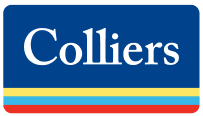How to Display HTML Content on a SharePoint Online Modern Page
Embedding HTML code into a SharePoint Online Modern Page allows for enhanced customization. This guide elucidates the process, showcasing the possibilities from layout alterations to the integration of interactive elements and third-party applications. With the fusion of CSS and JavaScript, the design and functionality of your SharePoint page can be significantly improved.
Contrary to older SharePoint versions which had restricted customization capabilities, the modern iteration empowers users with the flexibility to incorporate HTML, facilitating unprecedented design adaptability.
Understanding SharePoint Online Modern Pages
SharePoint Online Modern Pages represent a cornerstone of Microsoft SharePoint. They are crafted to:
- Content Organization: Empower users with tools like sections, columns, and web parts to streamline content. This includes integrating text boxes, images, videos, and charts for more effective communication.
- Responsive Design: Ensure content is easily viewable across a variety of devices.
- Collaboration and Co-authoring: Allow real-time simultaneous editing, rendering the need for multiple document versions obsolete.
- Integration with Office 365 Tools: Seamlessly work with tools like Power Apps and Power Automate to heighten interactivity.
Furthermore, Modern Pages bolster security and version control, which has contributed to SharePoint’s recognition by Gartner as a leading global content management solution.
Benefits of Adding HTML Code to a SharePoint Online Modern Page
The integration of HTML into SharePoint Online Modern Pages offers:
- Customization: Adapt fonts, colors, layouts, and integrate multimedia.
- Improved User Experience: Foster user engagement with interactive elements like forms or social media feeds.
- Embed External Content: Facilitate the embedding of various content types such as videos and maps.
- Mobile Responsiveness: Ensure consistent accessibility across devices.
- SEO Optimization: Enhance search visibility with adept use of HTML elements like title tags, meta descriptions, and structured data markup.
Preparing Your HTML Code
For proper HTML code integration into a SharePoint Online Modern Page, here are 5 essential points to consider:
- Clean & Validate: Check HTML for errors & invalid syntax.
- Responsive Design: Make it adaptable to different screen sizes & devices.
- Test Compatibility: Check it functions & won’t interfere with existing page elements.
- Accessibility: Follow guidelines so users with disabilities can easily navigate.
- Security: Review HTML for potential vulnerabilities & keep sensitive info secure.
Other details:
- Use inline styles or CSS to enhance HTML elements.
- Utilize modern web technologies like JS frameworks & libraries, ensuring compatibility with SharePoint Online.
- Regularly update & maintain HTML code to keep up with trends & security standards.
These steps will help integrate HTML code into a SharePoint Online Modern Page with optimal functioning, design, & security.
Displaying HTML on SharePoint Online Modern Pages
To embed HTML content on a SharePoint Online Modern Page:
- From HTML to ASPX: Convert the HTML page by renaming its extension from .HTML to .aspx.
- Uploading the ASPX File: Before uploading, activate custom scripts to avoid potential errors. Post the ASPX file and relevant resources to a directory, e.g., “Site Assets”. Adjust any content references in the ASPX file accordingly.
Using the Embed Web Part: Navigate to the target page and enter edit mode. Implement the “Embed” web part, directing it to the previously uploaded ASPX file.
Important Considerations
- Security: Prioritize secure, trustworthy sources when adding code.
- Path References: Maintain accurate paths for resources.
- Modern Script Editor Web Part: This isn’t a default SharePoint feature. If used, ensure familiarity with its functions.
- Testing: Validate custom HTML functionality in a test environment before a live deployment.
Best Practices for Adding HTML Code
HTML has enhanced the user experience on SharePoint Online Modern Pages. Ensure code organization, alignment with modern standards, and frequent validation to preserve functionality and compatibility. Adopting these practices lets users efficiently integrate HTML into their SharePoint Online Modern Pages for a tailored user experience.
Troubleshooting Common Issues
When integrating HTML into a SharePoint Online Modern Page, watch out for:
- Misplaced HTML code.
- Omitted closing tags.
- Unsupported HTML elements.
- JavaScript conflicts.
- Insufficient permissions for HTML modification.
Always approach troubleshooting with patience and seek expert guidance when needed.
Conclusion
Embedding HTML in a SharePoint Online Modern Page unlocks extensive customization. While the potential for unique design and dynamic content is vast, always ensure that the added code is secure and provides a consistent user experience across all platforms.
Frequently Asked Questions
FAQs – How to Add HTML Code to a SharePoint Online Modern Page
1. Can I add custom HTML code to a SharePoint Online Modern page?
Yes, you can add custom HTML code to a SharePoint Online Modern page. SharePoint Online Modern pages allow you to insert HTML code using the “Embed” web part.
2. How do I add HTML code to a SharePoint Online Modern page?
To add HTML code to a SharePoint Online Modern page, you need to follow these steps:
- Edit the page and click on the “+” sign to add a new web part.
- Search for and select the “Embed” web part.
- Click on “Add” to insert the web part.
- Click on “Embed” and paste your HTML code into the text box.
- Click on “Apply” to save the changes.
3. Is it safe to add HTML code to a SharePoint Online Modern page?
Adding HTML code to a SharePoint Online Modern page is generally safe, as long as you only use trusted and secure code. It is important to ensure the HTML code comes from reliable sources and does not contain any malicious scripts or vulnerabilities.
4. Can I customize the appearance of the HTML code added to a SharePoint Online Modern page?
Yes, you can customize the appearance of the HTML code added to a SharePoint Online Modern page. You can modify the CSS styles of the HTML code or use the formatting options available in the “Embed” web part to align, resize, or change the colors of the HTML elements.
5. Are there any limitations when adding HTML code to a SharePoint Online Modern page?
Yes, there are some limitations when adding HTML code to a SharePoint Online Modern page. Certain JavaScript functionality or external scripts may not work due to security restrictions. It is recommended to test and validate the HTML code thoroughly before implementing it on a production page.
6. Can I collaborate with others on a SharePoint Online Modern page that contains HTML code?
Yes, you can collaborate with others on a SharePoint Online Modern page that contains HTML code. Other users with appropriate permissions can edit and contribute to the page. However, it is important to communicate and coordinate with other collaborators to prevent conflicts or unintended modifications to the HTML code.







 Workflows
Workflows Projects
Projects Data Sets
Data Sets Forms
Forms Pages
Pages Automations
Automations Analytics
Analytics Apps
Apps Integrations
Integrations
 Property management
Property management
 Human resources
Human resources
 Customer management
Customer management
 Information technology
Information technology



